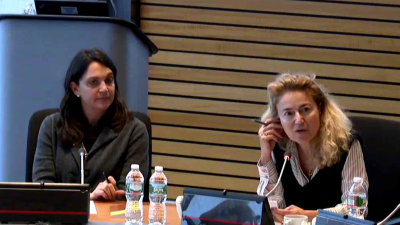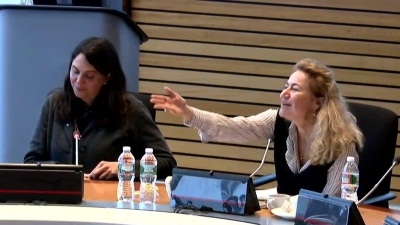In 2011, when Findex was first launched, only about half of the world’s population had a bank account. The new data point to significant progress in financial inclusion, with 62 percent of the world’s population having a bank account, up from 51 percent. Between 2011 and 2014, the number of unbanked adults was slashed by 20 percent to 2 billion.
Klapper, who oversaw the Research Department team that compiled the data and produced the report, highlighted a few key findings. The report found that account penetration has grown 13 percentage points in developing countries, and that the gap in account penetration between the poorest 40 percent and richest 60 percent of households narrowed by 6 percentage points.
In addition, technological advances like mobile money are helping to expand access, especially in countries in Sub-Saharan Africa. “Thirteen countries across Sub-Saharan Africa have mobile account penetration of 10 percent or more—no other continent has numbers approaching that level,” Klapper said. However, more than half of the poorest 40 percent in developing countries are still without accounts.
Women remain another underserved demographic, and no progress has been made in decreasing that inequality. “We have not seen any improvement in the gender gap since 2011—we found exactly the same persistent 9 percentage point gap in account ownership in developing countries,” Klapper said.
During her presentation, Klapper also discussed many of the over 100 indicators contained in the Global Findex, including frequency of account usage, how people save, and how governments, businesses, and individuals make payments.
Klapper highlighted several policy measures that could expand access to accounts and support greater usage. For instance, governments and the private sector can support a shift away from cash to digital transfers and payments of wages. According to the report, digitization of wage payment could increase the number of adults with an account by more than 300 million. Klapper also encouraged the private sector to create innovative products that support the digital payment of fees and transfer of remittances, particularly on the side of the recipient.
Countries such as Brazil and Kenya that are making significant progress share common features. “They offer low-fee bank accounts, they try to minimize documentation requirements, they allow correspondent and agent banking, there is an effort to digitize government and wage payments, and mobile technology is available,” Demirguc-Kunt added.
Researchers, policy makers, and other stakeholders discussed the policy implications of the report’s findings. Henriette Kolb, Head of the Gender Secretariat at IFC, asked, “What needs to happen next on gender?” Drawing from the data, Klapper responded that “although women are less likely to receive a wage than men, they are equally likely to receive that wage to an account. There is not an inherent bias in the type of wages that women are paid compared to men.” Consequently, a move to digitizing payments would have an equal impact on women who are in the workforce.
The wealth of data collected by the report will continue to inform the path to universal financial inclusion. “Improvement is not going to be linear, however: achieving full access will be more difficult towards the end,” Demirguc-Kunt cautioned.


